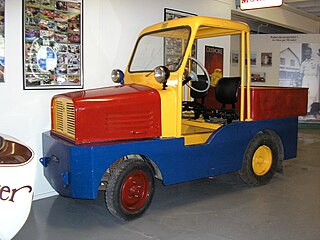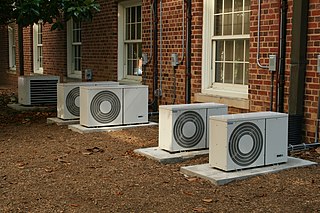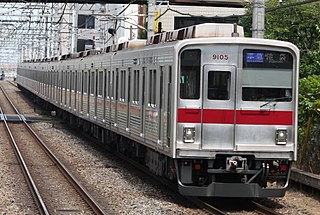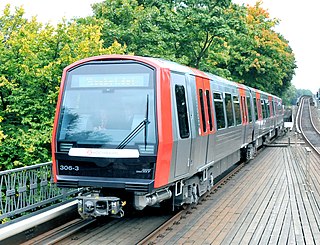This article includes a list of references, but its sources remain unclear because it has insufficient inline citations .(August 2012) (Learn how and when to remove this template message) |
| Bombardier C20 | |
|---|---|
 A Bombardier C20 on the red line to Mörby centrum | |
 Interior of a C20 car | |
| In service | 1998–present |
| Manufacturer | Kalmar Verkstad/Adtranz, Bombardier (only for C20F) |
| Built at | Kalmar, Sweden |
| Family name | Movia |
| Constructed | 1997–2004 |
| Number built | 270 vehicles (90 3-car sets) |
| Number in service | 270 vehicles (90 3-car sets) |
| Formation | 6 or 9 cars per trainset |
| Fleet numbers | 2000 (C20F) 2001–2270 |
| Capacity | (in 3-car formation) 126 seating 288 standing (323 standing for C20F) |
| Operator(s) | MTR Nordic (under contract from Storstockholms Lokaltrafik) |
| Depot(s) | Hammarby, Högdalen, Nyboda, Rissne, Vällingby |
| Line(s) served | All Stockholm metro lines |
| Specifications | |
| Car length | 46.5 m (152.56 ft) |
| Width | 2.9 m (9 ft 6.17 in) |
| Height | 3.68 m (12.07 ft) |
| Platform height | 1.15 m (3 ft 9.28 in) |
| Doors | 2 pairs per side for front/back cars 3 pairs per side for middle car |
| Maximum speed | 70 km/h (43 mph) (Green Line) 80 km/h (50 mph) (Red and Blue Lines) 90 km/h (56 mph) (Design speed) |
| Weight | 91,000 lb (41,277 kg) (A car) 86,670 lb (39,313 kg) (B car) |
| Electric system(s) | Electric AC, Third rail |
| Current collection method | Contact shoe |
| UIC classification | Bo'Bo'Bo'Bo' |
| Safety system(s) | ATC (ATO) |
| Track gauge | 1,435 mm (4 ft 8 1⁄2 in) standard gauge |
The Bombardier C20 is a type of subway train used in the Stockholm Metro, Sweden. Between 1997 and 2004, 270 cars were delivered to Stockholm (No. 2001 to 2270) by the former Kalmar Verkstad, owned by Adtranz, later acquired by Bombardier Transportation. The C20 is a completely new design and therefore is not compatible with other train types in the system. At 46.5 metres (153 ft), each carriage is longer than the previous train types. To save cost and weight, each unit has only four bogies. The middle car has two bogies. The end parts consist of one bogie each and are connected to the central portion via a semi-trailer-direction. Trolley subframes are made of stainless steel, and are less susceptible to corrosion.

Rapid transit or mass rapid transit (MRT), also known as heavy rail, metro, subway, tube, U-Bahn or underground, is a type of high-capacity public transport generally found in urban areas. Unlike buses or trams, rapid transit systems are electric railways that operate on an exclusive right-of-way, which cannot be accessed by pedestrians or other vehicles of any sort, and which is often grade separated in tunnels or on elevated railways.

Sweden, formally the Kingdom of Sweden, is a Scandinavian Nordic country in Northern Europe. It borders Norway to the west and north and Finland to the east, and is connected to Denmark in the southwest by a bridge-tunnel across the Öresund, a strait at the Swedish-Danish border. At 450,295 square kilometres (173,860 sq mi), Sweden is the largest country in Northern Europe, the third-largest country in the European Union and the fifth largest country in Europe by area. Sweden has a total population of 10.2 million of which 2.4 million has a foreign background. It has a low population density of 22 inhabitants per square kilometre (57/sq mi). The highest concentration is in the southern half of the country.

Kalmar Verkstad AB (KVAB) was a Swedish train and automobile manufacturer in Kalmar, Sweden that made the Tjorven and Terminal. KVAB was founded in 1902 and closed 2005 by Bombardier.
Contents
When the C20 was sold as the Vagn 2000 (English: Wagon 2000), it was marketed as the subway car of the future. All C20 coaches have been given their own names, all proposed by private individuals. Many of the names are linked to Stockholm; for example, coach no. 2001 was christened Birger Jarl.





















